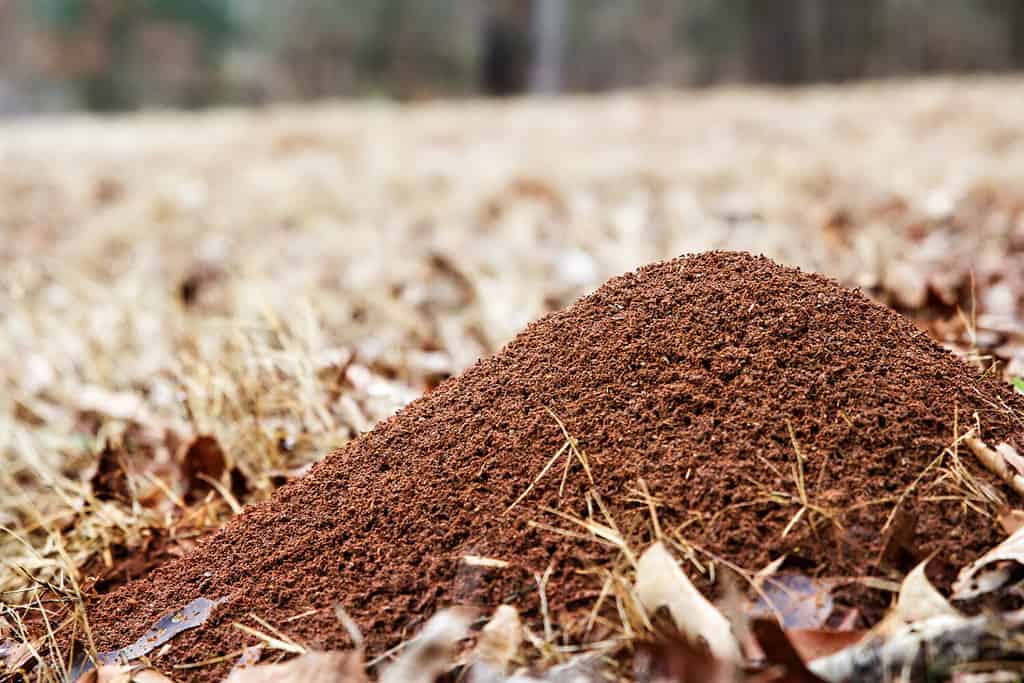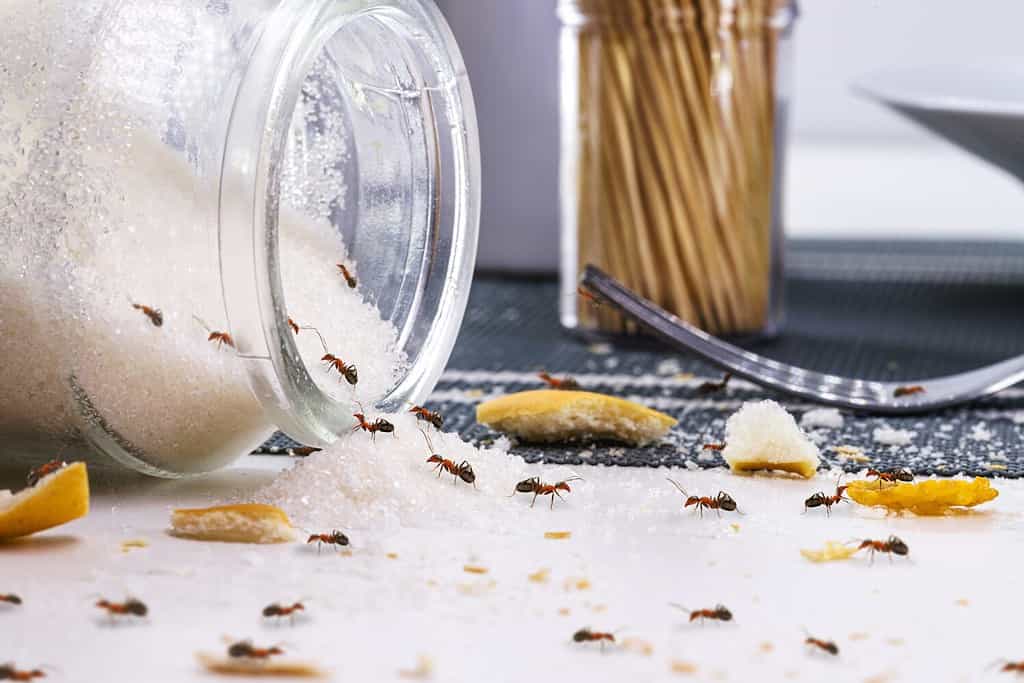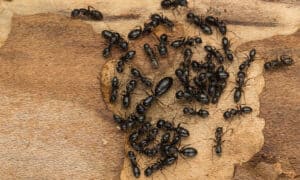
Humans and ants have always had a bit of a love-hate relationship. On the one hand, ants can be pests, getting into food supplies, biting and stinging, and mucking up our nice green lawns with their anthills.
On the other hand, we’re fascinated by how they work together to dig complex tunnels (and utterly demolish a slice of cake in half a day). In a lot of ways, these insects remind us of ourselves: small in the big scheme of things, yet working together to survive, build homes, and raise families.
In world folklore, ants typically earn praise for their industriousness and persistence in overcoming obstacles. Similarly, the book of Proverbs implies we ought to mimic ants’ commitment to work as a way of avoiding poverty.
In this article, we look at ants in the Bible and what the writer of Proverbs has to say about them.

Ant hills in your yard can reveal how much these tiny, persistent creatures accomplish working together.
©Tracey Patterson/Shutterstock.com
What Are Ants?
Characteristics
Ants are small insects that come in an estimated 22,000 species. Some of their distinguishing characteristics include six legs, two antennae, narrow waists, and sharp mandibles for biting and carrying. They’re extraordinarily strong for their size, able to carry things up to 50 times their own weight.

Some species of ant can carry things that weigh 50 times more than themselves.
©Andrey Pavlov/Shutterstock.com
Social Behavior
Ants live in colonies centered around a queen. Colonies can include anywhere from a few dozen to millions of individuals. Ants of different colonies sometimes wage war against one another over resources, taking slaves or stealing eggs. Ground-dwelling ants often form extensive networks of underground tunnels and chambers for various purposes, piling up the excavated soil a grain at a time near the entrance to make an anthill.
Interspecies Relationships
Believe it or not, there are so many ants in the world that their combined biomass is more than all the wild birds and mammals on the planet! This makes them an important food source for a lot of other animal species, large and small. Some ants engage in “farming” by clipping leaf fragments and growing edible fungus from them underground or feeding them to captured aphids that secrete an edible liquid. Another example of a symbiotic relationship between ants and other living things is seen in the acacia ant. They live in hollow thorns on the acacia tree and eat the plant’s sap. In turn, they clip down any seedlings that try to grow around the tree so that it will not have competition for sunlight and water, and they swarm and attack any herbivore that try to eat the leaves of the tree.

Ants in the Bible
There are only two mentions of ants in the Bible. Both can be found in the book of Proverbs, a book of wise sayings attributed mainly to King Solomon. This legendary king of Israel was reputed to be so wise that people from distant countries came to listen to him speak.
Proverbs 6:6-8
This passage warns lazy people to follow the example of ants to provide for themselves and not fall into poverty: ” Go to the ant, you sluggard; consider its ways and be wise! It has no commander, no overseer or ruler, yet it stores its provision in summer and gathers its food at harvest.” In the same way, people should take the initiative to work and prepare for their needs rather than waiting for someone else to tell them what they need to do.

A colony of leafcutter ants can defoliate an entire tree in a single day.
©Matyas Rehak/Shutterstock.com
Proverbs 30:24-28
The author of these verses encourages the reader to gain inspiration from four common creatures: ants, hyraxes, locusts, and lizards. He uses the ant specifically as an example of wisdom and planning. “Four things on earth are small, yet they are extremely wise: Ants are creatures of little strength, yet they store up their food in the summer.” The author goes on to observe that hyraxes are weak yet live in high mountains; locusts advance like an army without a king, and lizards are easily caught, but still find their way into securely guarded palaces.

Ants lay down chemical markers for one another to record a trail to a food source.
©RHJPhtotos/Shutterstock.com
Comparison to New Testament Teachings
The Bible’s primary message about ants is that they work diligently to prepare for their future needs. Does this conflict with the teachings of the New Testament? Jesus taught that we should ask God for our “daily bread,” not a big supply of it for the future. He used birds to show how God provides for the Earth’s creatures without cause for worry about the future.

Jesus noted that the birds don’t worry about the future because God provides for their daily needs.
©ukrit.wa/Shutterstock.com
However, the early church said that an able-bodied person who would not work would not be given free food to eat. Instead, people were supposed to work to provide for their needs and those of their families. The church helped those who could not support themselves due to their age or disability.
Like many life principles, the answer lies somewhere in the middle. The Bible encourages working to provide for the necessities. It encourages us to create some surplus to share with those who truly need help. At the same time, we are not to worry about the future or hoard things for ourselves. We are to place our trust in God as the ultimate provider. And that’s true, whether we’re ants, birds, or people.

Whatever our work is, we can try to do it with diligence and thoughtfulness, but without worry.
©Drazen Zigic/Shutterstock.com
The photo featured at the top of this post is © Andrey Pavlov/Shutterstock.com
Thank you for reading! Have some feedback for us? Contact the AZ Animals editorial team.







